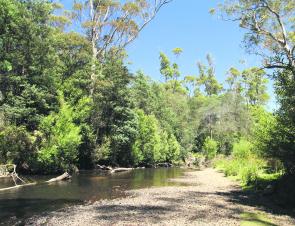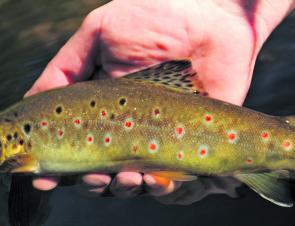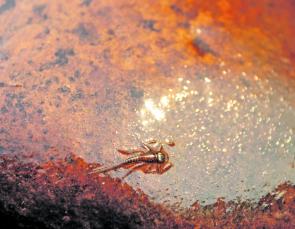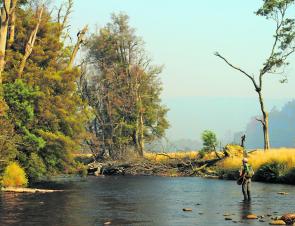Some folk begin packing up their fishing gear by April, thinking it all gets too tough from here on in. If you are one of these people then I’ll let you in on a little secret; Get your gear out because there’s still a month to go!
This heinous crime can be likened to parking your car in the garage because you only have a month left of rego left, or leaving some of your dinner to the side because you’re going to eat again tomorrow! I encourage all anglers to make the most of the season and fish until she’s all over, Rover. The date to remember is April 28. Designated rainbow waters (refer to the Angling Code) are open after this date until June 2.
Now the business end is out of the way – What can we expect? Well some waters have been experiencing some late ‘hopper activity due to the persistent warm and dry weather but much of this will cease by the end of March. What we can expect is some more mayfly activity, especially late in March and early April.
These few weeks often see a re-emergence of both red and black spinners and the smaller caenids which have been phenomenal this season. The positive factor at this time of year however, is that the wind is often much more settled so when hatches do occur, mayfly sometimes leave the safety of the bank to hover over the water in swarms to dip their abdomens in the water and lay their eggs.
A feast on a platter for any trout if you ask me! Not to say this doesn’t happen when it is windy, it’s just that the fishing can become a bit more consistent and rises predictable when the insects are not getting blown about in all directions.
Hot spots include Brumbys Creek, Macquarie River and the South Esk.
Another insect to look out for is the flying ant. You can sometimes see swarms of these insects hovering above bushes like hawthorn on the side of the road. This is the time to head to your local waterway to see if there are any about. The prime time to hit the water is late afternoon, dusk or even after dark (if the water allows fishing after sunset). The ants can fall in great numbers and trout become fixated on these little delicacies.
Small F Flies work the best and I’ve recently been playing with a dedicated ant pattern, also with a CDC wing that I’m confident will produce the goods. Waters to explore include the Meander, Macquarie and St Patricks rivers. I’m still unsure as to why, but sometimes a bit of bushfire smoke can be a trigger to the ant fall.
Another option to consider is to have a look around the upper reaches of the Tamar River for sea-run trout. Although sea-runners are rightly associated with whitebait runs they often delay any spawning for a couple of years and that’s why they are generally fit specimens but at the end of the day, many that hide in saltier shores can’t ignore the deep-seeded need to spawn and so they head upstream.
Lunkers are sometimes encountered in the tailrace and along the banks of the North Esk River. Even the rapids on the way to the First Basin (the Gorge) have seen some activity over the years. Even if you don’t encounter a sea-run brown, some hefty resident fish lurk around the gorge region!
Four Springs has been very quiet with anglers doing it tough in warm water that’s choked up with weed. The last few weeks of the season can fire them up in here though, as fish become naturally aggressive at this time of year and cooler temperatures make them feel little more at home. Bulky wet flies, big lures and plastics bring some large browns undone each year towards the end of the season so even though it gets tough over summer, this water is one of those waters to fish before the season closes.
Huntsman Lake has been very low and difficult for many over summer but we can expect some activity here as well, providing that not too much water goes over the dam and the levels push up the banks some more. Couple this with some decent rain and we will see fish moving up to feed in the shallows. Most fish here are small but they are plentiful and much easier to target when in concentrations around the lake edge.
As with most rivers around Tasmania, the north has been very low during the warmer months and this has forced numbers of fish to become more concentrated in deeper holding water in some of the smaller streams. Blind fishing these likely spots with a single dry fly has been productive and I recently found that even drifting dries in under bushes and next to structure can bring some of the better fish out to play.
When turning over rocks on the St Patricks River recently, I found large numbers of nymphs and I imagine that the first decent amount of rain we receive will flush a huge number of nymphs of varying size and specimen out into the path of some very patient fish. If we do get this rain, late season nymphing will be dynamite.
Reads: 1100
A dry season has reduced some rivers’ flows, forcing trout back to holding pools.

The colours of Tasmania’s wild stream browns are amazing.

Nymphs galore under the rocks, the first decent rain and these will all be trout tucker.

Bushfire smoke haze has been a constant feature this year, but it does seem to flush out the insects such as ants.




